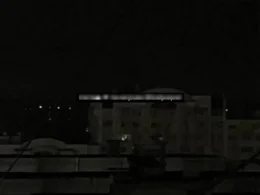A precision strike by Ukrainian forces destroyed four Russian helicopters at a base in Russia's Belgorod Oblast using US-made HIMARS missile launchers, as Ukrainian special forces monitored the operation with surveillance drones.
"The target was engaged," the Ukrainian special operations command reported about the 24 March attack that hit two Mil Mi-8 transport helicopters and two Kamov Ka-52 gunships.
Four M30 rockets, each weighing 660 pounds and containing 180,000 tungsten fragments, struck the aircraft from as far as 57 miles away. Video evidence of the destruction emerged eight days later when a Russian soldier's assessment of the damage began circulating online.
"Oh well, direct hit," the soldier said in footage translated by Estonian analyst WarTranslated. The soldier documented extensive damage while speaking to a comrade by phone. He said that "kerosene is pouring out" of Ka-52 number 96 and reporting "spillage in the front."
The soldier added that one Mi-8 helicopter had "kerosene fucking pouring" from it with blast damage "to the ass" that severed a rotor blade.
The widespread destruction reflected the specific design of the M30 rockets and larger ATACMS missiles, which release thousands of submunitions or fragments to target vulnerable assets like personnel and helicopters.
The US Army tested the two-ton M39 ATACMS missile by targeting mock airfields with parked helicopters and trucks. Test footage showed submunitions tearing through the rotorcraft and vehicles.
The Belgorod strike occurred as Ukrainian forces conducted a limited incursion into the oblast after retreating from neighboring Kursk, Russia. Ukrainian brigades initially made modest gains by "taking advantage of the emeny's communication and coordination problems," according to the Ukrainian Center for Defense Strategies, though they've since withdrawn facing Russian counterattacks.
The helicopter strike appeared to be retaliation for a 13 March Russian artillery attack that caught three Ukrainian Mi-8 or Mi-17 assault helicopters on the ground in Novopavlivka, approximately 35 miles behind the front line near Avdiivka in eastern Ukraine. A cluster munition strike destroyed up to three Ukrainian helicopters and killed two aviators.
Read also:
- HIMARS strike destroys four Russian helicopters in single operation
- HIMARS strike destroys four Russian military helicopters in Belgorod Oblast
- Forbes: Ukrainian HIMARS strike may have damaged three North Korean howitzers




